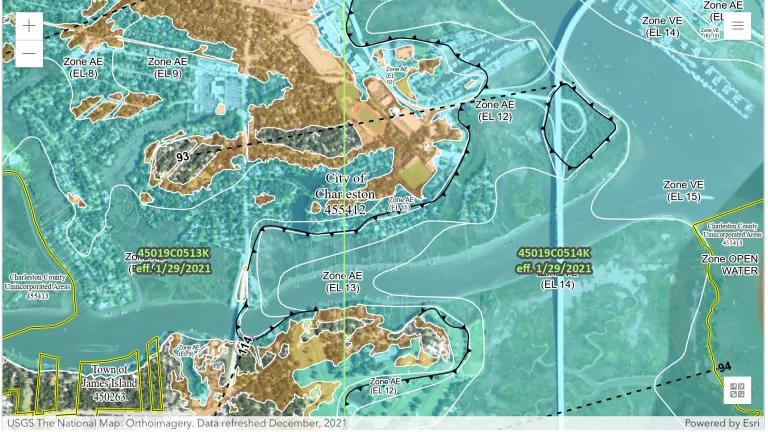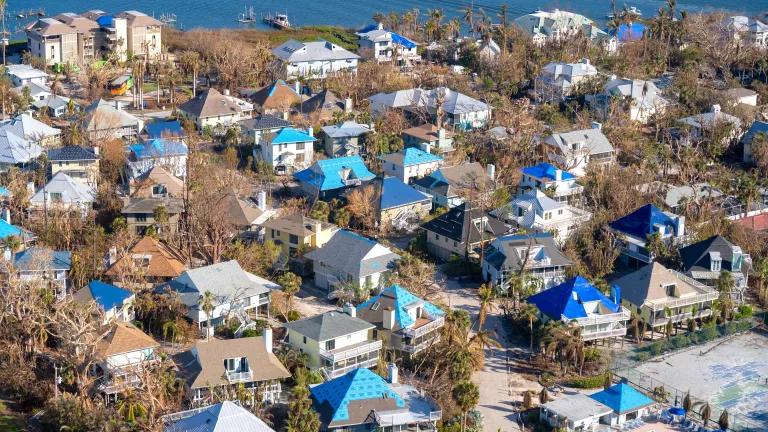Flood Survivors' Stories Highlight Policy Failures
Flooding has become a part of too many people’s lived experience due to bad government decision-making and climate change.

The climate crisis has made its way to the doorsteps—and kitchens and living rooms—of hundreds of thousands of Americans in the form of flooding. We often hear about these issues from scientists, insurance analysts, and other experts, but we rarely hear from the people who live with the reality of repeated flooding. Today we can.
A new episode of America Adapts, the award-winning podcast about climate adaptation, features interviews with four incredible women who live in communities that suffer through recurring flooding. These community leaders – Jackie Jones, Gloria Horning, Amber Bismark, and Terri Stracka -- shared their stories with host Doug Parsons and are active members of the Anthropocene Alliance.
I highly recommend you listen.

Listen to this important episode of America Adapts, featuring the Executive Director of Anthropocene Alliance, Harriet Festing, and four community leaders: Jackie Jones, Gloria Horning, Amber Bismark, and Terri Straka
Terri Stracka and Anthropocene Alliance
The episode also features the Executive Director of Anthropocene Alliance, Harriet Festing, and I'm interviewed at the end.
Each of these amazing individuals talk about what it’s like to live in a home and a community where, through no fault of their own, flooding is a clear and present danger. Their stories illustrate how failures of public policy translate into real-world harm and suffering for countless numbers of people.
These policy failures include:
- Federal floodplain development standards that haven’t been updated since the 1970s;
- outdated building and zoning codes combined with lax enforcement;
- flood maps that fail to show how climate change affects future flood risk,
- and state laws that allow property owners to avoid disclosing past flood damages to renters or new buyers.
Like tens of thousands of others in the United States, Jackie, Gloria, Amber, and Terri find themselves trapped in a brutal cycle of flood-rebuild-repeat. As climate change increasingly causes stronger storms, more intense rainfall and rising sea levels, millions more will be in this same situation in the coming decades. We need climate-informed policies in place today so that we are not creating more problems that must be solved later.
Each one of their stories reflects the real-world results of public policy failures. They have been forced to live with the consequences of bad decision making. Each of these stories is a human-caused tragedy. Many of these policy failures originate from the National Flood Insurance Program (NFIP), administered by the Federal Emergency Management Agency, or FEMA.
While our understanding of flood risk and vulnerability has evolved enormously, many FEMA rules and regulations have not. In fact, FEMA’s floodplain development standards (also known as land use criteria) haven’t been updated since the 1970’s, as NRDC and the Association of State Floodplain Managers pointed out in a legal petition filed in early 2021. Nor has the agency incorporated future conditions like extreme weather and sea level rise into flood maps that are relied upon for making almost every development decision in the United States.
These shortcomings contribute to bad decision-making in approximately 22,000 communities and counties nationwide.
Every day that FEMA’s outdated rules remain in place puts more people and communities in harm’s way.
Fortunately, FEMA initiated a process last October, in response to our legal petition, to overhaul many aspects of the NFIP. The first step of that process wrapped up in January, when NRDC, the Anthropocene Alliance, and many others called on the agency to update multiple aspects of the NFIP. Now we need FEMA to move expeditiously to put meaningful new rules in place. The troubled NFIP has multiple problems, all of which are made worse because of climate change.
These policy failures also make life miserable for countless people in the United States who live with recurring flooding and face seemingly insurmountable obstacles getting these issues addressed.
On America Adapts, Jackie, Gloria, Amber and Terri share their stories of how they ended up living in homes that flood, what steps they’re taking to try and fix these problems, and how they have connected with many others facing similar challenges, thanks to the Anthropocene Alliance.
Some common elements:
- All of them live in states where a property owner do not have to disclose a home’s flood history to a home buyer or renter. There was virtually no way for them to know their house was prone to flooding when they decided to live there.
- Official flood maps produced by FEMA often indicated that their home was at little risk of flooding. After living there, they found out how wrong FEMA’s maps were.
- In many cases, their flooding problems have gotten worse either due to more frequent severe weather, or because of bad development decisions by local government, which push more water onto their properties.
- All of them want FEMA to update its rules and regulations, to spare more people from the suffering they have endured, along with their neighbors.
As an advocate myself, it is so humbling to hear their stories. Every day they are living in a situation nobody wants to be in – having to worry about when their home and their neighbors’ homes will flood again. Their homes are threatened on an all-too-frequent basis and they have had an exceedingly difficult time getting their local or state officials to care or take action.
But through the Anthropocene Alliance, they’ve banded together and amplified their collective voice, which author Elizabeth Rush noted so eloquently in this New York Times op-ed.
Hundreds of members of the Anthropocene Alliance testified to FEMA during public meetings and through written public comments earlier this year. They shared their personal stories of living with flooding and the need for FEMA to finally overhaul its policies to be current with climate threats.
Now, we wait while the agency contemplates its next move.
But for tens of thousands today and millions more in the coming decades, every day that FEMA waits, more and more people are put in harm’s way.




